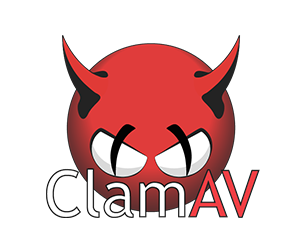There are a number of solutions on the market for scanning a Mac for files that have become infected with a virus or macro-virus. Many of these have a negative return on investment. So customers can instead go the open source route to scan files and quarantine them. And customers can use Jamf Pro to enable doing so. This page is meant to provide a quick and dirty guide to doing so, along with how this might be packaged and potentially tracked with Jamf Pro. First, we’ll install and configure a free tool called clamav.There are a number of ways to install clam. For this example, just to get it done quickly, we’ll use homebrew which is simply brew with the install verb and clamav as the recipe to be brewed:This is going to place your configuration files in /usr/local/etc/clamav and these cannot be used as those supplied by default are simply sample configurations. Because the .sample files have a line that indicates they are an “Example” they cannot be used. So we’ll copy the sample configuration files for freshclam.conf and clamd.conf (the demonized version) and then remove the Example line using the following two lines:
You and your Mac Whether you’re a home user, business user or education user, ClamXAV provides effective malware protection on a single Mac or an entire network. With generous volume discounts available, it’s a small price to pay for peace of mind. It’s a great product!
If your computer still has Mac OS X 10.6.8 to 10.9.5, you can use ClamXAV 2. Step 1 Find ClamXAV3.1.28690Installer.pkg in your Downloads Folder and double click it and follow the on-screen prompts to perform the installation. When asked for your admin name and password, these are the ones you use to log into your computer. ClamAV for Mac lies within Security Tools, more precisely Mac protection. The Non-Graphical ClamAV Antivirus Solution for Mac OS X. I wrote this as a free alternative to the excellent ClamXav. MacClam sets up real-time directory monitoring and schedules periodic scans. It uses ClamAV as an AntiVirus engine and fswatch to actively monitor directories for new or changed files, which are then sent to clamd for scanning. Get ClamAV running on Mac OS X (using Homebrew) The easiest way to get the ClamAV package is using Homebrew $ brew install clamav.
cp/usr/local/etc/clamav/freshclam.conf.sample /usr/local/etc/clamav/freshclam.conf; sed-ie 's/^Example/#Example/g'/usr/local/etc/clamav/freshclam.confDownload Os X Mavericks Installer
cp/usr/local/etc/clamav/clamd.conf.sample /usr/local/etc/clamav/clamd.conf; sed-ie 's/^Example/#Example/g'/usr/local/etc/clamav/clamd.confsudomkdir/Users/Shared/Quarantinesudoclamscan -r — scan-pdf=yes-l /Users/Shared/Quarantine/Quarantine.txt — move=/Users/Shared/Quarantine//

result = `cat/Users/Shared/Quarantine/Quarantine.txt`Clamav For Mac
#Echo Quarantine into EAecho'<result>$result</result>'